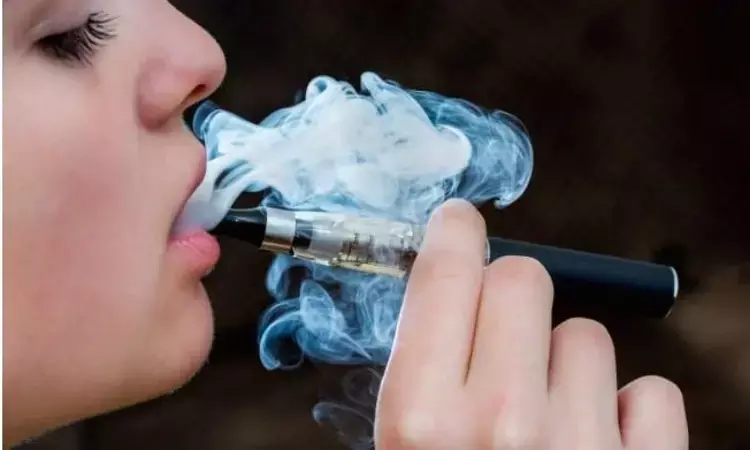- Home
- Medical news & Guidelines
- Anesthesiology
- Cardiology and CTVS
- Critical Care
- Dentistry
- Dermatology
- Diabetes and Endocrinology
- ENT
- Gastroenterology
- Medicine
- Nephrology
- Neurology
- Obstretics-Gynaecology
- Oncology
- Ophthalmology
- Orthopaedics
- Pediatrics-Neonatology
- Psychiatry
- Pulmonology
- Radiology
- Surgery
- Urology
- Laboratory Medicine
- Diet
- Nursing
- Paramedical
- Physiotherapy
- Health news
- Fact Check
- Bone Health Fact Check
- Brain Health Fact Check
- Cancer Related Fact Check
- Child Care Fact Check
- Dental and oral health fact check
- Diabetes and metabolic health fact check
- Diet and Nutrition Fact Check
- Eye and ENT Care Fact Check
- Fitness fact check
- Gut health fact check
- Heart health fact check
- Kidney health fact check
- Medical education fact check
- Men's health fact check
- Respiratory fact check
- Skin and hair care fact check
- Vaccine and Immunization fact check
- Women's health fact check
- AYUSH
- State News
- Andaman and Nicobar Islands
- Andhra Pradesh
- Arunachal Pradesh
- Assam
- Bihar
- Chandigarh
- Chattisgarh
- Dadra and Nagar Haveli
- Daman and Diu
- Delhi
- Goa
- Gujarat
- Haryana
- Himachal Pradesh
- Jammu & Kashmir
- Jharkhand
- Karnataka
- Kerala
- Ladakh
- Lakshadweep
- Madhya Pradesh
- Maharashtra
- Manipur
- Meghalaya
- Mizoram
- Nagaland
- Odisha
- Puducherry
- Punjab
- Rajasthan
- Sikkim
- Tamil Nadu
- Telangana
- Tripura
- Uttar Pradesh
- Uttrakhand
- West Bengal
- Medical Education
- Industry
Electronic nicotine delivery systems raise risk of poor oral health outcomes: JAMA

Recent research published in the Journal of the American Medical Association has revealed that evolving tobacco use patterns, including increased use of electronic nicotine delivery systems (ENDS), leads to an increased risk of gum diseases, bleeding after brushing or flossing, and loose teeth.
Electronic nicotine delivery systems (ENDS), often known as electronic cigarettes, e-cigarettes, vaping devices, or vape pens, are battery-powered devices used to smoke or "vape" a nicotine-laced flavored solution. While smokeless tobacco use has since long been associated with pre-cancerous oral lesions in South Asia, where these products are designed to be highly addictive, and their use is culturally and socially acceptable and often combined with other carcinogens-the effects of ENDS remain controversial. The FDA, CDC, and the American Academy of Family Physicians (AAFP) are currently concerned about the drastically rising use of ENDS, particularly among teenagers and young adults, and individuals seeking to stop smoking tobacco.
To bridge the gap, the research team examined associations between tobacco use and the incidence of adverse oral health outcomes (i.e., gum bleeding, pre-cancerous oral lesions, bone loss around teeth, bleeding after brushing or flossing, loose teeth, and one or more teeth remov ed) across different tobacco products among adults (aged ≥18 years) using data from the Population Assessment of Tobacco and Health (PATH) Study. Data analysis revealed some interesting facts.
• Cigarette smoking was associated with several adverse oral health outcomes (i.e., gum disease diagnosis, loose teeth, and one or more teeth removed).
• Increasing cigarette pack-year history was significantly associated with this oral health outcome, confirming the importance of both the number of cigarettes smoked and the duration of smoking to the risk of poor oral health.
• ENDS use was positively associated with bleeding after brushing or flossing.
• E-cigarette vapor, with or without nicotine, and its additional flavoring agents may harm periodontal ligament, stem cells, and gingival fibroblasts in culture due to aldehydes/carbonyls, which cause protein carbonylation of extracellular matrix, DNA adducts/damage, and cellular senescence.
Although e-cigarettes were created and marketed as a healthier alternative to smoking tobacco products, there is a growing body of information demonstrating that their aerosols contain a variety of toxicants, carcinogens, and organic compounds formed by the thermal breakdown of the solvents. In addition to supporting the FDA's tobacco regulation initiatives, the recent findings highlight the necessity of tobacco cessation counseling and services in clinical practice.
References-Silveira ML, Everard CD, Sharma E, et al. Tobacco Use and Incidence of Adverse Oral Health Outcomes Among US Adults in the Population Assessment of Tobacco and Health Study. JAMA Netw Open. 2022;5(12):e2245909. doi:10.1001/jamanetworkopen.2022.45909
Source-JAMA
Dr Satabdi Saha (BDS, MDS) is a practicing pediatric dentist with a keen interest in new medical researches and updates. She has completed her BDS from North Bengal Dental College ,Darjeeling. Then she went on to secure an ALL INDIA NEET PG rank and completed her MDS from the first dental college in the country – Dr R. Ahmed Dental College and Hospital. She is currently attached to The Marwari Relief Society Hospital as a consultant along with private practice of 2 years. She has published scientific papers in national and international journals. Her strong passion of sharing knowledge with the medical fraternity has motivated her to be a part of Medical Dialogues.
Dr Kamal Kant Kohli-MBBS, DTCD- a chest specialist with more than 30 years of practice and a flair for writing clinical articles, Dr Kamal Kant Kohli joined Medical Dialogues as a Chief Editor of Medical News. Besides writing articles, as an editor, he proofreads and verifies all the medical content published on Medical Dialogues including those coming from journals, studies,medical conferences,guidelines etc. Email: drkohli@medicaldialogues.in. Contact no. 011-43720751


